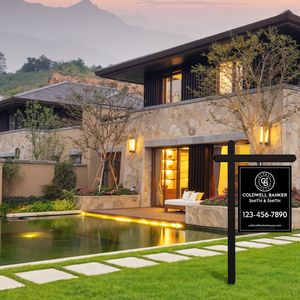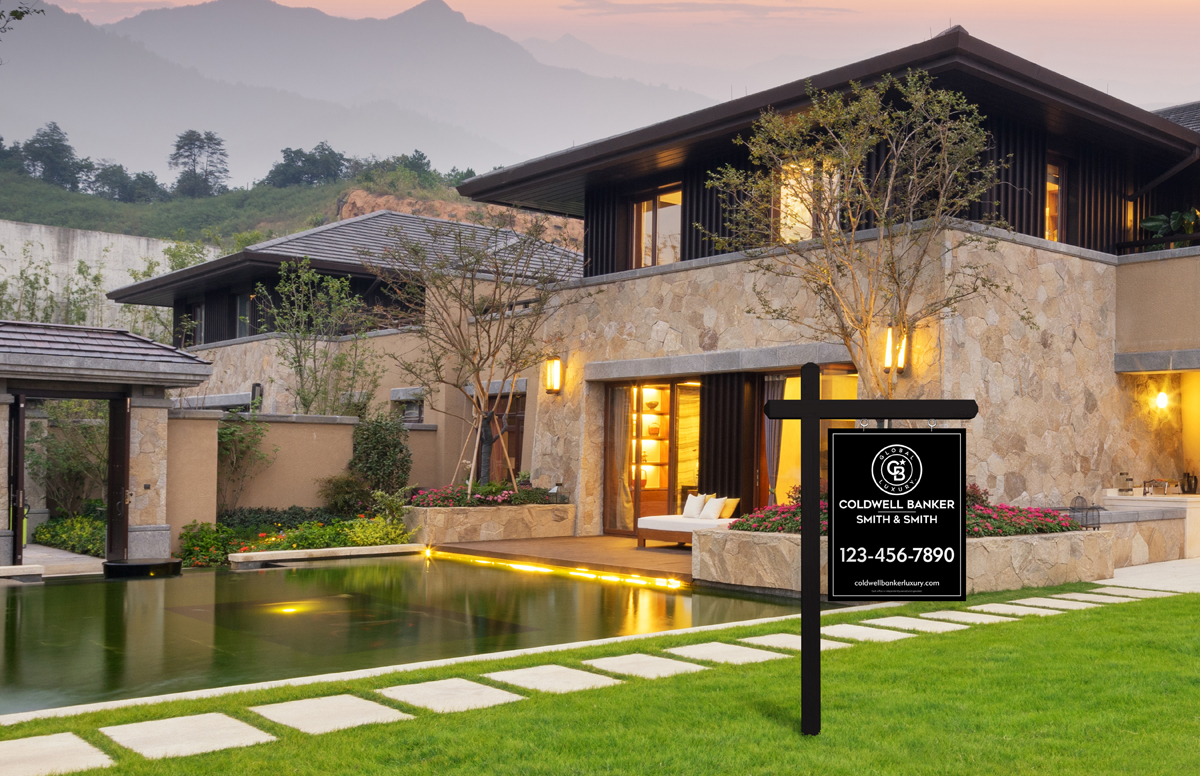This article originally appeared on Inman.com.
Michael Altneu, vice president of luxury for Coldwell Banker Real Estate LLC.
We’ve never lived through a year like 2021 – an astonishing statement, considering we were all expressing a similar sentiment around this time last year.
The luxury real estate buying boom that began in 2020 escalated in 2021. Insatiable demand depleted inventory across the U.S. and put upward pressure on prices. Driving the real estate surge was a combination of factors: 1) shifting consumer values caused by the Covid-19 pandemic, 2) historic wealth growth due to cryptocurrency gains, soaring stock markets, rising house prices and increased savings and 3) the idea of home became paramount. As people searched for safe places to put their wealth and re-envisioned home as multi-functional spaces for work, play and sanctuary, they sought out bigger and better living environments. Many luxury real estate professionals will look back on 2021 and be able to say that it was their best year yet.
The question now is: will 2022 build on this unprecedented momentum, or will there be a deceleration of demand as some experts are predicting? There are a number of unknowns that will dictate future market direction, but here are five key trends to watch:
1. Low inventory
Low inventory continues to constrict the top 10% of the market. In September 2021, there were 36% more luxury homes sold than new inventory entering the market. One month later, that figure ballooned to 55%. Coldwell Banker Global Luxury® Property Specialists from across the country have told me that they do not see inventory levels improving any time soon. “The biggest story of the year is that our inventory is down 44% year-to-date in the Aspen area and 72% in Snowmass Village,” commented Carrie Wells, the No. 1 agent in the Coldwell Banker network.
2. New luxury price thresholds
Declining inventory levels, combined with a lack of desirable properties, has pushed prices up across all luxury price points.
Median luxury sold prices* as of the end of October 2021, compared to the full year of 2020, has risen 23% for single family homes and 14% for attached properties, according to recent stats compiled by the Institute for Luxury Home Marketing, the partner who helped us prepare our 2021 “A Look at Wealth” report released this fall.
One of the price segments with significant growth was the $1 to $5 million range. In the first 10 months of 2021, there was a 69.2% increase in the number of single-family sold properties in that price category and 65.3% for attached properties, compared to the full year of 2019. Based on current trends, sales for single-family homes priced $1 to $5 million will rise YOY by 64.6% compared to 2020 and 112.6% compared to 2019, while attached properties will rise by 81% compared to 2020 and 96.6% compared to 2019.
As a result, luxury price thresholds rose across the U.S. In Los Angeles, the entry-level luxury home price hovered around $2 million for many years, but is now closer to $3 million, according to Joyce Rey of Coldwell Banker Realty in Beverly Hills. It’s not just happening in major U.S. cities either. Even in a small resort market like Hilton Head Island, S.C., the barrier to luxury entry has increased nearly 40% since 2019, from about $550,000 to $779,000 – “while at the same time experiencing a more than 60% decrease in the inventory of homes,” noted Thomas M. Kersey with Coldwell Banker Access Realty.

3. High demand for turnkey properties and new construction
Turnkey properties are still sparking bidding wars and fetching the highest prices. Jade Mills, also in Beverly Hills, said earlier this year: “People have a lot on their plate and adding a remodel to a move during such complicated times gives added attraction to a move-in condition house. Clients want done houses.” In Miami Beach, Danny Hertzberg of Coldwell Banker’s Jills-Zeder Group estimates that 90% of his affluent buyers want new construction, compared to 70% of them, pre-pandemic. Recent supply constraints in the construction industry – from labor shortages to materials like lumber, concrete and paint – have only amplified demand for turnkey and newly built properties.
This is also the case in Manhattan, where new luxury construction appears to be leading the city’s recovery. A joint report by Marketproof and UrbanDigs recently found that Manhattan new development deals in October 2021 rose 122% to 224 contracts from last year’s pandemic depressed 101. Month-over-month, the number of deals increased 28% from September’s 175 contracts. Median list prices also increased 71% year-over-year in October and 52% from September, buoyed in part by 200 East 83rd Street, a Robert A.M. Stern-designed luxury development by Naftali Group and Rockefeller Group, which reported 35 contracts ranging from $3.6 to $11.5 million. As Gerard Splendore, a broker for Coldwell Banker Warburg Realty, noted: “It is not entirely surprising that most post-pandemic buyers prefer pristine and immaculate spaces that are previously unoccupied as opposed to older residences with wear and tear. After all, who wouldn’t want to move into an entirely new home, with the most modern accouterments and facilities at their disposal?”
4. The migrations continue
The Great American Migration was still in effect for much of 2021, except partly in reverse. Whereas in 2020 people were fleeing densely packed cities and pandemic hotspots to small town hidden gems, suburbs and popular second home destinations, people returned to cities in 2021. Another group of buyers were also making moves to small to midsized cities with more affordable home prices and reasonable commuting distances to major employment centers.
5. The rise of co-primary ownership
Happening concurrently with migrations, as remote work became the norm, was the rise of co-primary ownership. Some affluent buyers did not fully migrate to other locations; rather, they simply swapped a secondary residence for a primary residence or chose to own two primary properties in different locations and split their time based on lifestyle preferences.
Looking Ahead
What will 2022 bring? Inflation, mortgage rates and construction supply constraints are all economic factors to watch. Our Luxury Property Specialists are also keeping an eye on what wealthy international buyers will do now that U.S. travel restrictions are lifted. Markets like Miami are especially keeping close tabs on this development, per the Jills Zeder Group. “Miami has doubled the number of sales in the $5+ million range year-over-year,” they recently shared. “As international buyers make a slow comeback to the Miami market and start competing with domestic buyers, we anticipate an even tighter inventory.” And, with low inventory levels and turnkey properties commanding a premium, will we see some wealthy buyers pivoting to adjacent “aspirational” markets or adjusting their expectations and purchasing properties that need a little work?
All of these elements will be in play in 2022. The Coldwell Banker Global Luxury team will analyze it all in our forthcoming “The Report,” due out in February 2022.
Michael Altneu is the vice president of luxury for the Coldwell Banker brand, leading its elite Coldwell Banker Global Luxury program.
* Defined as the top 10% of any given market

 Facebook
Facebook
 X
X
 Pinterest
Pinterest
 Copy Link
Copy Link


